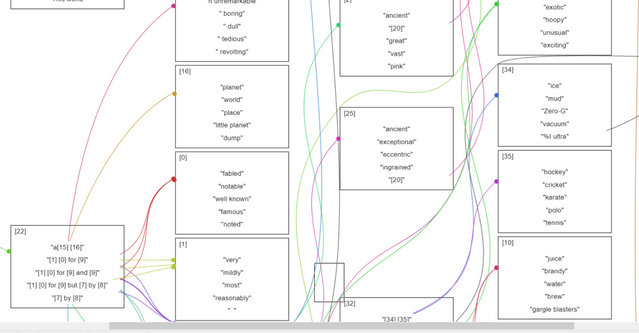phkb wrote: ↑Mon Mar 11, 2024 11:46 am
Um....
Well, it was just "forests" and "oceans" actually.

It looks like you've distinguished between the forest types as well.
From just a quick scan of the code...
Looks like the main changes are to land colour, percentage of cloud and percentage of land.
Further looks like with land colour you've upped the green for forests; for percentage cloud you've upped it for rain forests; and for percentage land you've decreased it for oceans.
Some thoughts:
Land Colour
Upping the G of RGB will obviously make things more green but instead, how about reducing the B instead? My biology is a bit rusty here but most leaves are green because they're targeting
the light from the red end of the spectrum (green/red in 'opposition') light from other parts of the spectrum.
In theory, it could be almost any wavelength but we all live on earth (right?) and so we all intuitively expect green. But red, brown, orange, yellow leaves, we've all seen those too but not so many blue ones. Blue is intuitively sky/water (even though neither is actually blue but I think you get my point).
So decrease the blue and we nudge things towards not so much what might be
expected but rather might what be
accepted by the human eye.
Percentage Land
This is a bit tricky. The only way to be sure that you have something even resembling distinct oceans would be to set this pretty low but that doesn't prevent the production of lots of island chains breaking it all up into many relatively small bodies of water.
Short of checking them all individually, maybe drop it down whenever it exceeds 50% (for the sake of variance, you could 'flip' the land/sea bias e.g. 75% land become 75% water). Whether that results in significant oceans or not, there would be a noticeable presence of water (or whatever), at least on the more rapidly rotating F7 depiction of the planet.
The difference between an ocean and a sea isn't immediately obvious anyway and maybe interchangeable use has become the norm c. 3100.
Percentage Clouds
If it doesn't already, then this should correlate with percentage water (or inversely with percentage land).
Large water bodies are likely to produce more evaporation than large bodies of land.
Rain forests would produce a lot of rain (and to a lesser degree so might forests generally) but its the water from the trees causing that and so large bodies of water tend to evaporate even more. Most worlds are inhabited by human colonials (and all by earth-like soecies) so I'd expect that to be true re temperature etc.
So yeah, up it for all of them. For forests a bit, for rain forests a lot and for vast oceans as much as you can bear.
Hope that helps.

